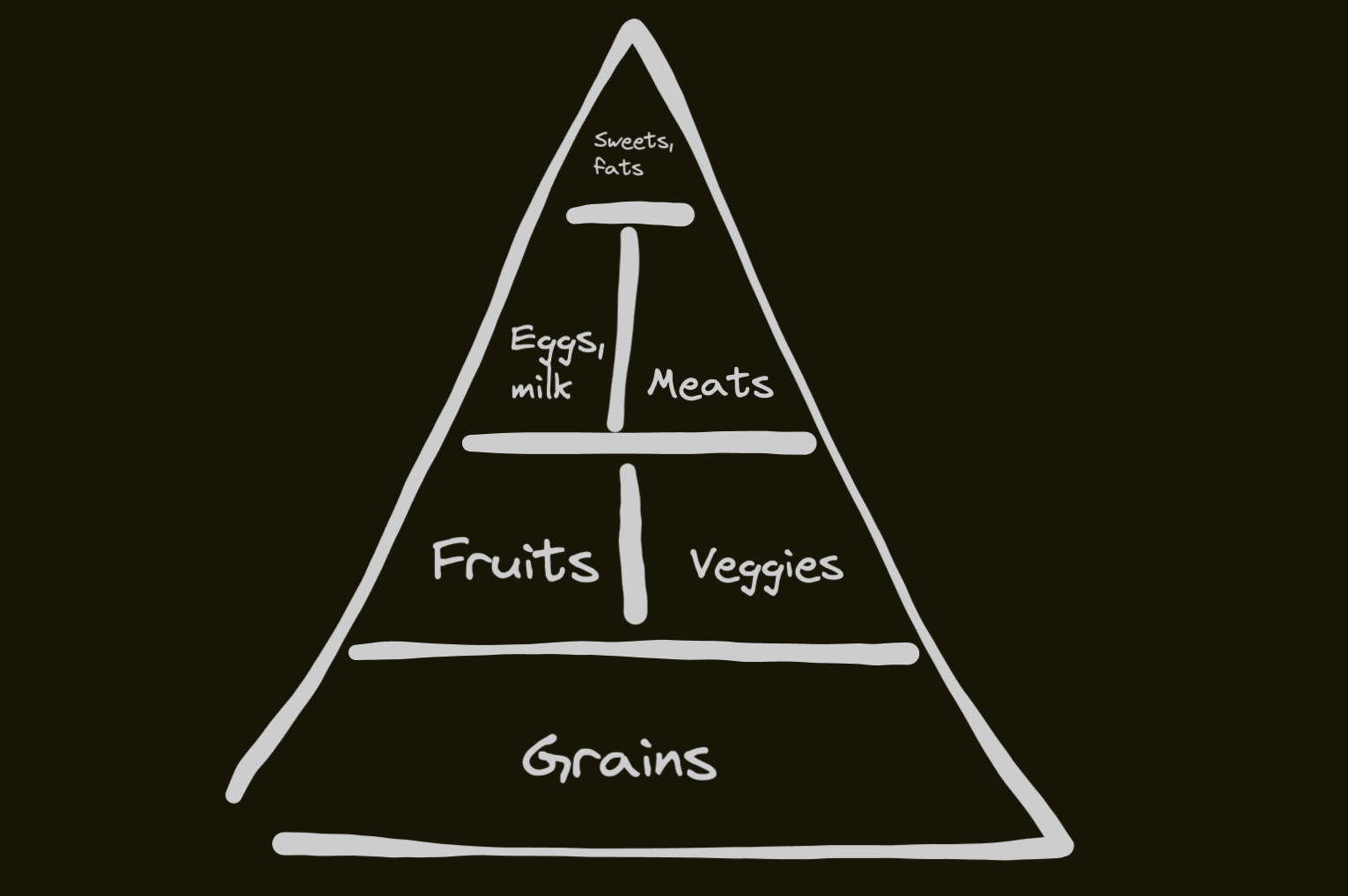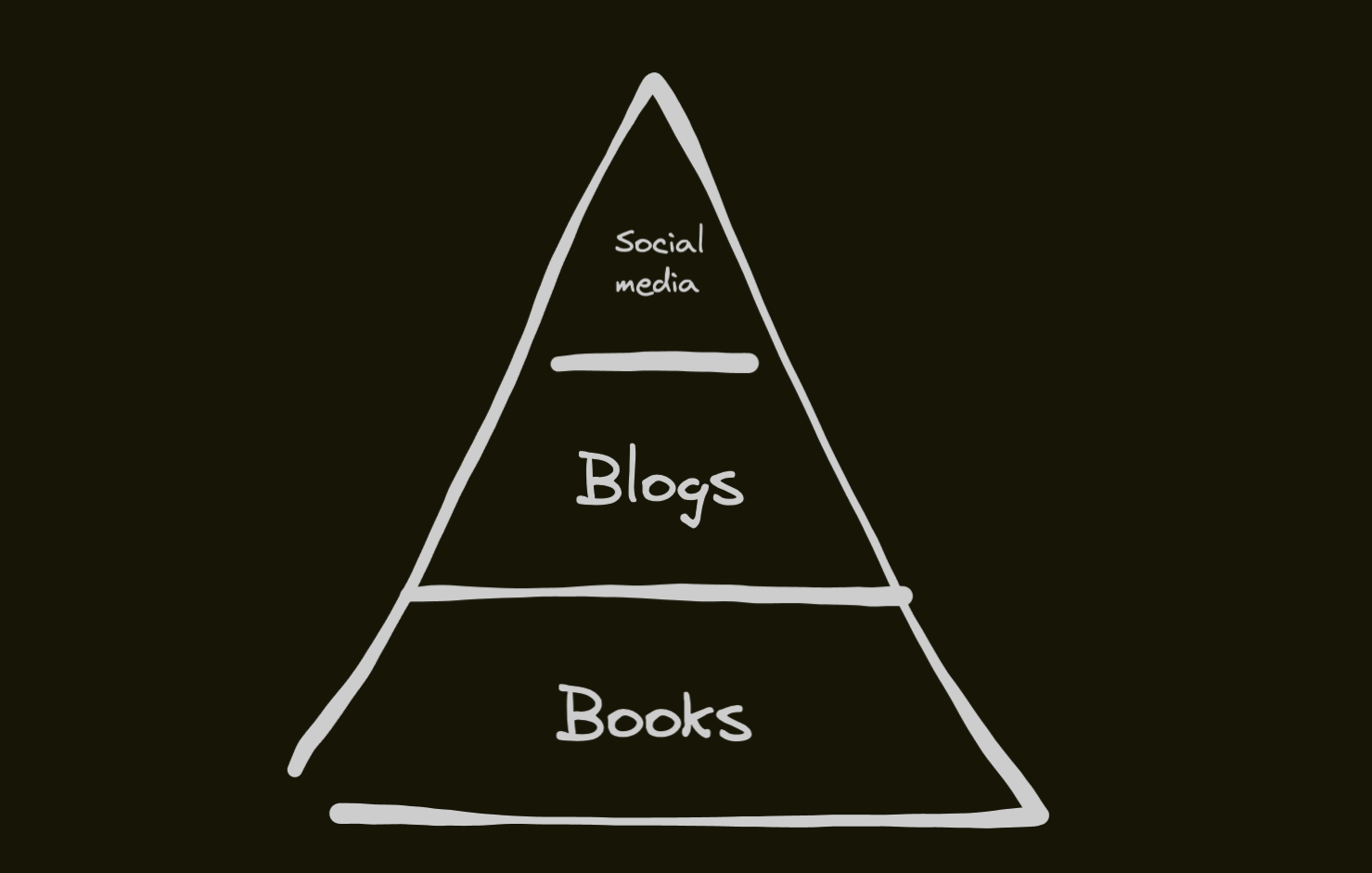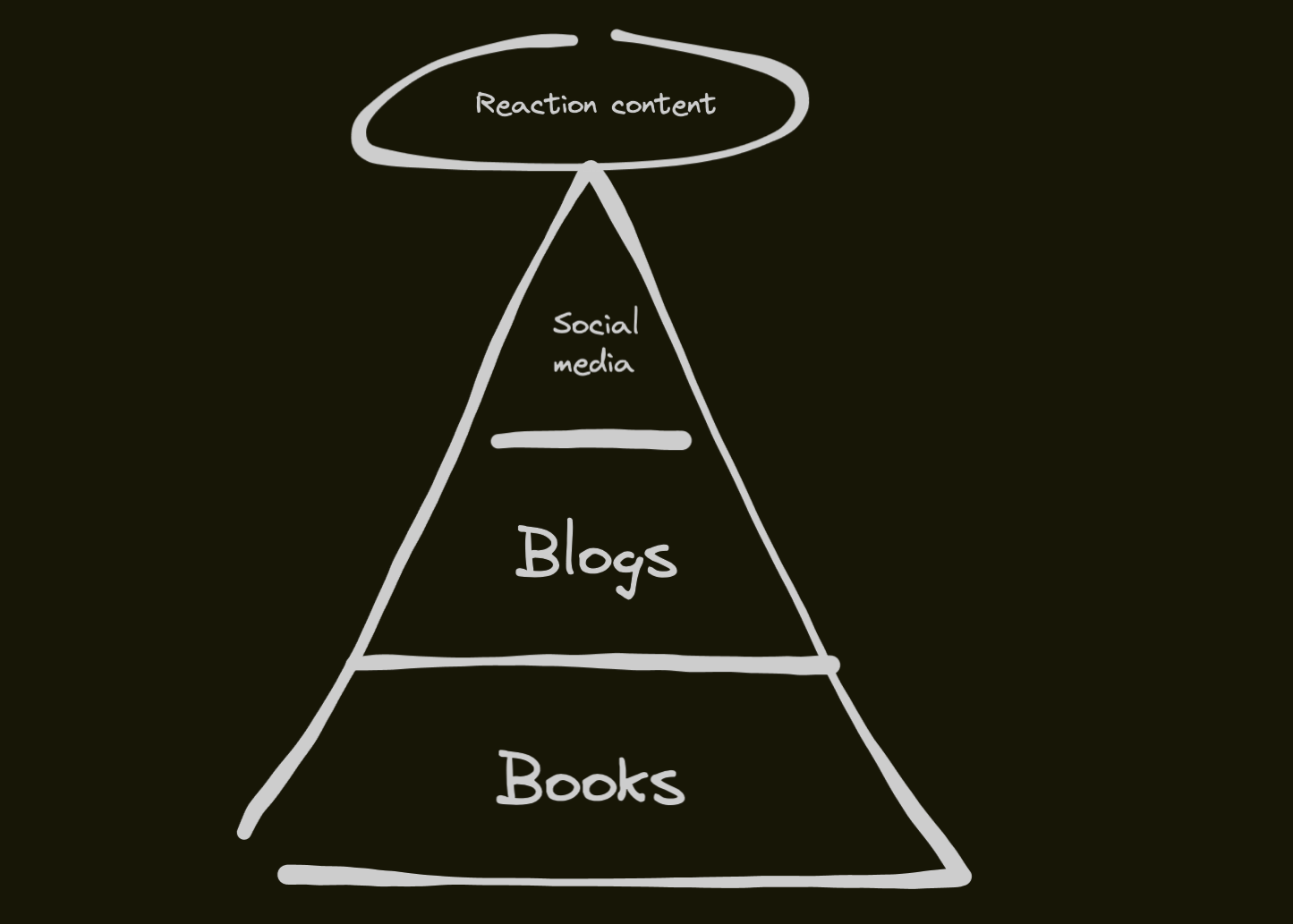It’s universally agreed that eating a lot of junk food and candy over your lifetime will lead to all sorts of problems: diabetes, increased cancer risk, obesity, heart problems, digestive issues, etc.
And if you grew up in the early 90s, maybe you learned these lessons from the “Food Pyramid”: an ominous, overly simplified, all encompassing guide to the various food groups. The pyramid was an attempt to teach the youth of America what acceptable portion sizes are, how to balance their diet, and which food groups to avoid.

Towards the bottom of the pyramid, forming the base of the whole structure, are the most essential foods: fruits, veggies, and basic grains. Further up, with less area of the overall pyramid, animal by-products like cheese, milk, eggs, and meat. And all the way at the top, with nearly no area of the pyramid at all, fats and sweets.
While the overall impact of this early 90s initiative is questionable, at best, in a culture consumed by fast food and cheap eats, the idea behind the food pyramid was simple: eat fewer foods high in fats and sugars. Especially those of the over-processed kind.
We can think of the food pyramid as a breakdown of the basic “building blocks” of what should form a healthy diet. The blocks towards the bottom should make up the majority of someone’s diet. While the blocks at the top should form the smallest part of one’s diet. Inverse that relationship, and you have an incredibly unstable upside-down pyramid, ready to topple over.
Ultimately, food in any food group breaks down into calories, proteins, minerals, vitamins, and all the other nutritional components we can digest. Even ultra-processed foods break down into these components: but they are often overly inundated with sugar and fat to make it insatiable to the human palate.
We can apply this same idea to the media we consume.
Books and other “slow” media make up the base. TV, news, and other mass media make up the middle. And at the top, social media: the “candy and soda” of modern media consumption.
… ultra-processed foods are created by first breaking down cheap stock foods into their basic elements, and then recombining these ingredients into something unnatural but irresistible. Something similar happens with social media content. Whereas the stock ingredients for ultra-processed food are found in vast fields of cheap corn and soy, social media content draws on vast databases of user-generated information — posts, reactions, videos, quips, and memes. Recommendation algorithms then sift through this monumental collection of proto-content to find new, hard to resist combinations that will appeal to users.
This same structure applies to “engineering” content: at the bottom are books, documentation, research papers, and conference talks. Things that require a lot of time, effort, energy, and invention from the creator to produce. This is the 1st tier.
In the middle are well thought out technical blogs, focused forums, and well structured tutorials. This is the 2nd tier.
And towards the top, the most attention seeking and algorithmic driven are social media posts, YouTube videos, and free for all places like Hacker News and Reddit. This is the 3rd tier.

Yet, somehow, in a never ending pursuit of becoming a 10x engineer, some really clever individuals with growing social media influence introduced a 4th, even more ultra-processed tier: reaction-content.
If you didn’t know, “reaction-content” started as a way for YouTubers to pump out nearly infinite daily videos with minimal effort by “reacting” to other pieces of content, usually video. Example: it’s not uncommon to see “You laugh you loose!” pieces of reaction-content on YouTube. This is where someone watches a super-cut of funny videos and … well, they attempt to not laugh. You, the viewer, are the one watching the person watching something. You are not directly consuming the funny videos. You are consuming content of someone consuming content.
The levels of inception reaction-content can get into can be abit mind numbing.
And, unfortunately, what technical, engineering reaction-content has become isn’t really any better: instead of watching something, you’ll often see people reading something from tiers lower in the content pyramid. The typical formula these days for large engineering YouTubers like ThePrimeagen or Theo is to record a super-cut of themselves (often during a live-stream to ensure the parasocial relationship keeps going full force) reading or reacting to some viral blog or post on Hacker News or Reddit. These days, it’s very rare to find large engineering YouTubers creating content in the 1st or 2nd tier of the content pyramid. Sometimes, you’ll even see reaction-content to other pieces of reaction-content creating a machine of reacting to reactions that becomes a whole meta-verse in itself.
There seems to be no way to escape it either: I’ve seen a lot of technical creators go along the creator treadmill from tier 2 to tier 3 and, eventually, land in tier 4 doing reaction videos: they start with making high quality, very good technical tutorials or deep dives. Eventually it devolves to posting on social media with hot takes or consumable pieces of content on their area of expertise. And enevitably, if they stay on the dug in trail of the online creator, they’ll find themselves doing online reaction-content.

Why is this a problem?
For a few years now, I’ve worried about the general ability of engineers in the industry, both new and old, to think for themselves. While the overall media literacy of adults in the United States is decreasing, I believe part of what’s to blame is this 4th tier of ultra-mega-processed content: hundreds and hundreds of thousands of people every day are being spoon fed opinions, reactions, and ideas that are accepted as fact just because it comes from their favorite engineering YouTuber.
I recognize the irony here: I’ve made technical reaction-content in the past. I once had a TikTok acount with 100k+ followers where I mostly just reacted to the latest technical news of the day. But, as a creator once in the jaws of the system, I understand the struggle: it’s nearly impossible to not get sucked into the trap of algorithmic ultra-mega-processed content. These platforms are fighting with a user base who has an increasingly diminished attention span. And often times, pushing the most shocking, condensed, and “clickable” pieces of media is what keeps users and advertisers on the platform. And creators want their content consumed. So, creators on platforms are often subtly nudged to continue doing the thing that eventually puts them on the path of “easily consumable” content where very, very little is asked of the audience.
“Am I empowering my audience? Or am I simply asking them to blindly consume?”
One of the marks of really excellent engineers is the ability for them to process a lot of raw information and come to a sensible, weighted technical decision. Maybe you’re considering a new framework to implement a critical system in and you need to consider performance trade-offs, team strengths, organization requirements, budget, and so much more.
The worst possible thing someone in this situation could do is make a knee-jerk decision based on the latest reaction-content trend.
Be extremely mindful of your own personal “content pyramid diet”. How much of the 3rd or 4th tier are you consuming? Strive to cultivate a personal media consumption habit that prioritizes slow media and quality technical blogs that empower your own decision making capabilities and technical skills. Avoid consuming things at the top of the content pyramid. Otherwise, much like a poor nutritional diet will whither away your body, you risk rotting away your technical skills.